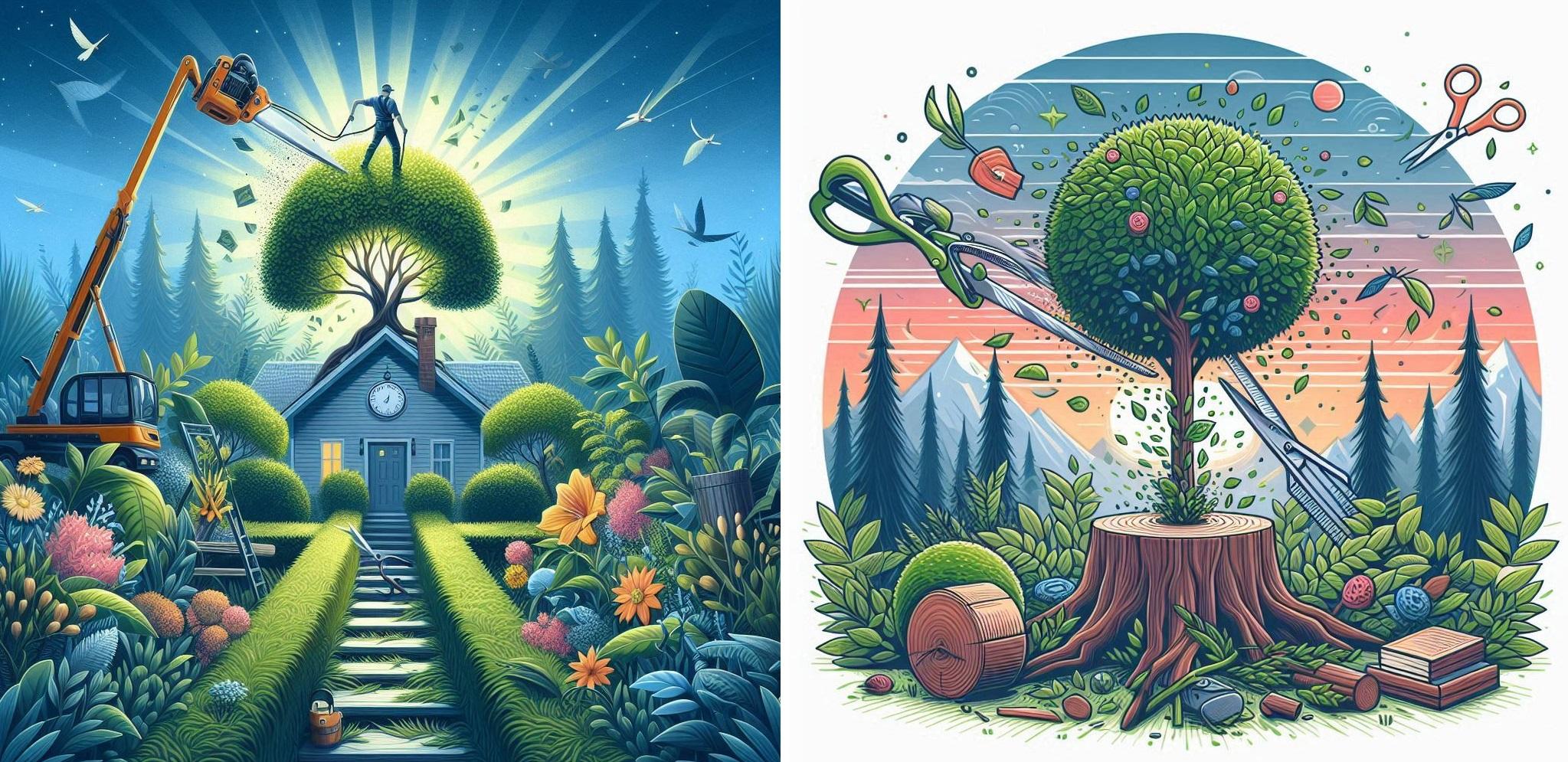Maintaining a beautiful landscape goes beyond just mowing the lawn. One of the critical aspects of lawn care involves trimming Bushes and Trees. Proper trimming not only enhances the aesthetic appeal of your property but also promotes healthy growth and prevents potential hazards. Understanding the right timing and techniques for trimming can make a significant difference in the overall health of your plants.
Why Trimming Bushes and Trees is Essential
Regular trimming is vital for several reasons. First, it encourages new growth, helping your bushes and trees to flourish. Trimming away dead or diseased branches allows the plant to redirect its energy towards healthier parts. Additionally, proper trimming improves air circulation and sunlight penetration, which are essential for the growth of your plants.
Another important aspect is safety. Overgrown branches can pose risks, especially during storms. They might break off and cause damage to your home or nearby structures. By trimming your bushes and trees, you minimize these hazards, ensuring a safer environment for your family and guests.
Timing is Everything
The timing of your trimming can have a considerable impact on the health of your plants. Different types of bushes and trees have distinct growth patterns, so knowing when to trim is crucial. Most flowering shrubs, for instance, should be trimmed right after they bloom. This allows the plant to produce new buds for the next flowering season. On the other hand, evergreen trees may require trimming in late winter or early spring, just before new growth begins.
Understanding the seasonal changes is also essential. In spring, as temperatures rise, many plants begin to awaken from their winter dormancy. This is often the best time to trim most species, as it encourages robust growth. However, some trees and shrubs may benefit from fall trimming, especially if they are prone to diseases or pests.
Tools and Techniques for Effective Trimming
To achieve the best results when trimming bushes and trees, using the right tools is essential. Sharp pruning shears, loppers, and saws are fundamental. For higher branches, a pole pruner may be necessary. Before starting, ensure that all tools are clean and sharp to make precise cuts that will heal quickly.
When trimming, always focus on the overall shape of the plant. Avoid cutting too much at once; a good rule of thumb is to never remove more than one-third of the plant at a time. This minimizes stress and encourages healthy regrowth. For bushes, aim for a rounded or natural shape, while trees may require more careful shaping to maintain their structural integrity.
Make clean cuts just above a node or bud to promote new growth. For thicker branches, using a saw can help ensure that the cut is clean and minimizes damage to the plant. After trimming, it’s a good practice to clean up any debris to maintain the beauty of your landscape and to prevent pests from taking up residence in dead branches.
Signs That Your Plants Need Trimming
Recognizing when your bushes and trees need attention is vital for maintaining their health. If you notice a decline in growth or an increase in dead or diseased branches, it's time to grab your tools. Discoloration, wilting leaves, or excessive leaf drop can also indicate that your plants are not thriving.
Sometimes, plants can become overgrown, blocking sunlight from reaching lower branches or neighboring plants. If your bushes are encroaching on walkways or other plants, regular trimming will help keep everything in check. Additionally, if you see branches rubbing against each other, it's crucial to intervene to prevent damage.
Professional vs. DIY Trimming
While many homeowners take on the task of trimming their own bushes and trees, hiring a professional can be beneficial in certain situations. Experienced landscapers understand the intricacies of plant health and can identify issues that may go unnoticed. They also have the expertise and equipment to handle larger trees safely.
However, for smaller shrubs and manageable trees, DIY trimming can be a rewarding experience. It allows you to connect with your landscape and gives you control over its appearance. If you choose to tackle this task yourself, always prioritize safety. Wear protective gear, and consider using a harness if you’re working with tall trees.
The Role of Climate in Trimming
The climate in your region plays a significant role in determining the best times for trimming. In warmer climates, certain plants may require more frequent trimming due to their rapid growth rates. Conversely, in colder areas, the trimming schedule might be adjusted to account for dormancy periods. Always consider local weather patterns and consult with gardening resources specific to your area to optimize your trimming schedule.
Conclusion
Properly trimming your bushes and trees is essential for a healthy, beautiful landscape. By understanding the timing, tools, and techniques involved, you can ensure that your plants thrive. Whether you choose to do it yourself or hire a professional, the benefits of regular maintenance are undeniable. For more detailed guidance on timing and techniques, visit Bushes and Trees.
Investing time in your landscape not only enhances your property's curb appeal but also promotes a healthy ecosystem. Start planning your trimming schedule today, and watch your garden flourish!

.jpg)
.jpg)